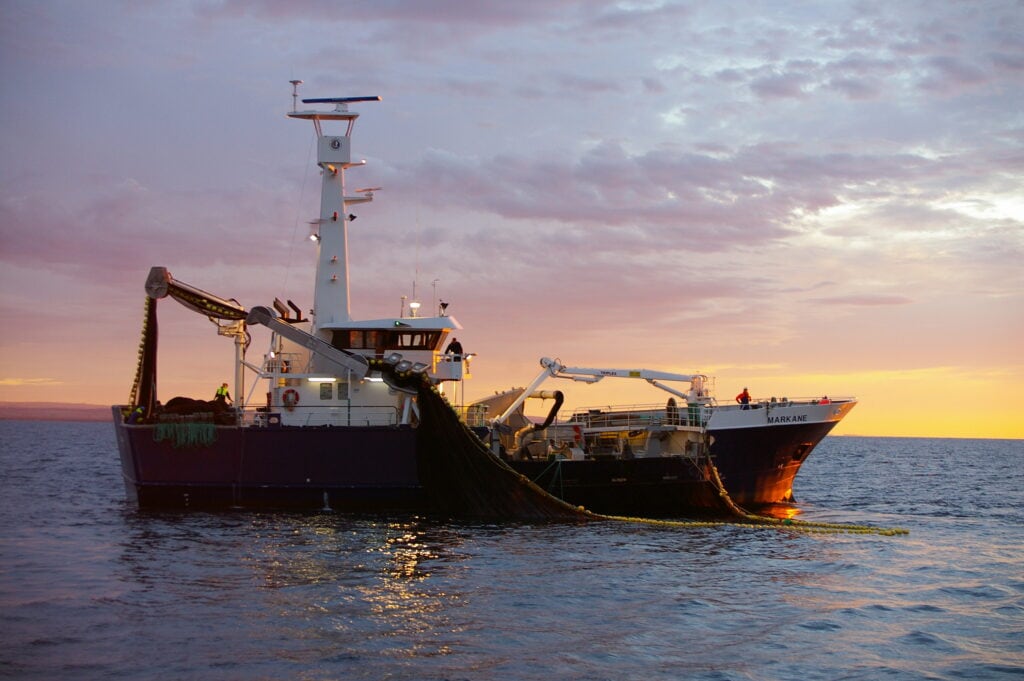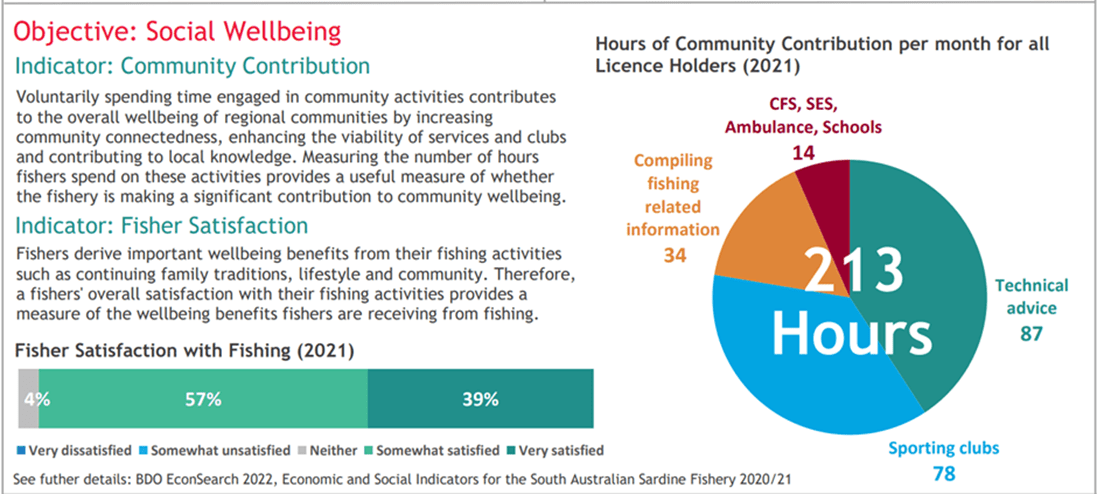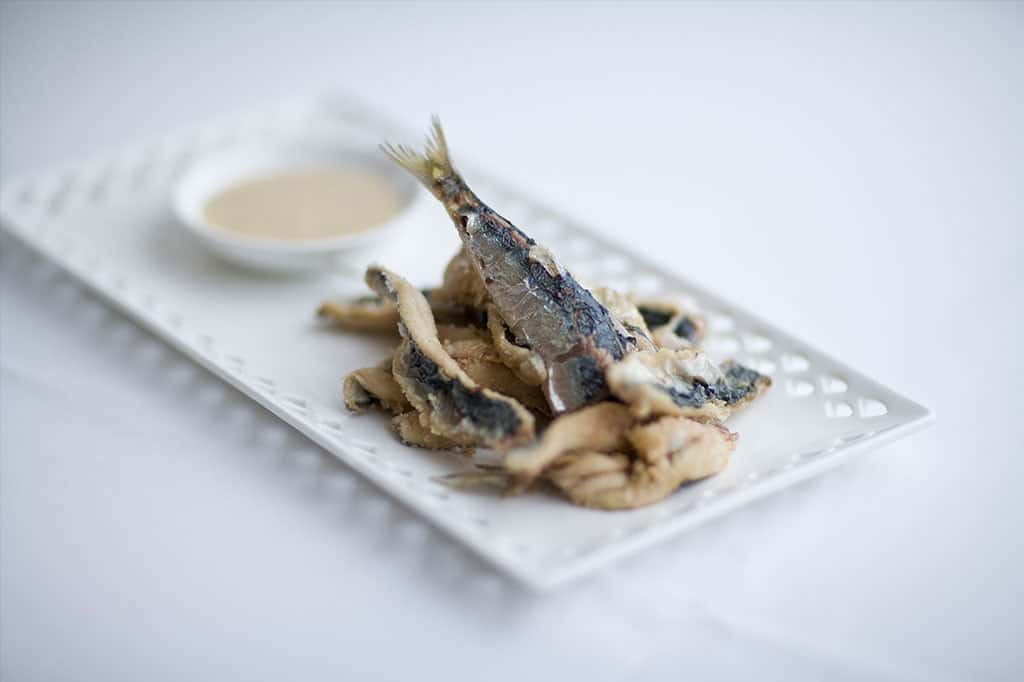Though small in size, sardines are one of the world’s highest sources of essential omega 3 oils. Often overlooked as a poster dish of the seafood world, Australian chefs are rediscovering the South Australian Sardine since local innovative fishermen introduced a range of premium fresh and frozen sardines for food service and retail markets.
The South Australian Sardine Fishery is the biggest single fishery in Australia, with a 45,000 – 55,000 tonne per annum total catch allocation, or quota. Eyre Peninsula’s waters are blessed with an abundance of Australian Sardines (Sardinops Sagax), which are sourced from the cold, clean waters of South Australia’s gulfs and remote west coast.
Most of the catch is used by Port Lincoln tuna farmers as feed for Southern Bluefin tuna. However, recent investment by operators in specialised processing equipment has seen the emergence of a growing human consumption demand both domestically and internationally. Working closely with fishers involved in post-harvest processing and marketing, local sardine producers have developed an innovative product range that includes pre-packed fresh and frozen boneless butterfly and barrel fillets.
History
Before 1993, the South Australian Sardine Fishery was seasonal, with the majority of the harvest taken by tuna fishers during the summer months for live bait.
Interest in establishing a commercial fishery began in the mid 1980s, with product being supplied to the recreational bait and pet food markets. Following the development of tuna farming in Port Lincoln, an increased demand for Sardines for use as feed resulted in greater research into the industry and the establishment of thresholds that enabled larger catches.
In 1991, the Government approached Marine Scalefish licence holders seeking expressions of interest in establishing a fishery for Sardines. Twenty licence holders were granted permission, although very few took up fishing on a full-time basis or invested in purpose-built fishing facilities. As a result, the fishery was unable to supply the tuna farms with their required supply of Sardines.
The access entitlement was subsequently reviewed and the (then) Scalefish Management Committee offered further licenses to additional groups, including approved Australian Tuna Boat Owners Association permit holders. In 2000, a Pilchard Fishery Independent Advisory Allocation Panel was established to provide advice to the Minister regarding future access to the sardine resource. The fishery is now managed under its own management plan and regulations, set out in 2021. There are 14 licence holders that fish for Sardines with transferrable quotas.
Sustainability
The South Australian Sardine Fishery, under the Fisheries Management Act 2007, aims to protect, manage, use and develop the aquatic resources of South Australia in an ecologically sustainable way, protecting them from over-exploitation and ensuring resources are well understood. The South Australian Sardine industry works closely with Primary Industry and Resources South Australia (PIRSA) to ensure the objectives of the Act are achieved.
The South Australian Sardine industry implements a framework of sustainable harvest strategies that minimise the industry’s environmental footprint, ensuring consumers and trade have access to a great tasting and healthy fish from a sustainable stock population. The industry is carefully managed, with current catches at only 22.5% of the annual biomass estimate – a globally conservative harvest limit for a species of this nature. The fishery invests in research that measures the size of the Sardine spawning biomass in South Australian waters and determines the level of the commercial catch based on the outputs of this research. In addition, the South Australian Sardine Fishery was declared a sustainable fishery by the Commonwealth Department for Environment, Water, Heritage and the Arts, under the Environment Protection and Biodiversity Conservation Act 1999, in 2009. The fishery has also been certified as sustainable by the Marine Stewardship Council (MSC), an independent assessor of the sustainability of fisheries globally.
Sardines are a schooling species with the majority caught at night using a method of fishing known as ‘purse seining’. When located, the net (purse seine) is deployed around the school of fish and the catch is pumped on board into refrigerated holds, at below zero temperatures. A single catch can yield between 5 and 150 tonnes and by-catch of other species is very low due to the selectivity of the purse seine method. Sardine fishing is conducted all year-round, however the majority of fish are harvested between the end of January and end of May.
The fishery is managed primarily by an Individual Transferable Quota (ITQ) management regime, which is set annually and divided amongst the license holders based on their owned statutory fishing rights (SFR’s).
Innovation
The Sardine industry continues to supply domestic and export markets with high quality pre-packed sardines for human consumption including fresh and frozen whole, head and gutted, barrel fillets and butterfly fillets in a range of pack sizes. Pet grade Sardines are supplied for tinned food and dehydrated treats.
In 2021 the GVP of the fishery was $24, and the fishery was included in the top 4 most efficient in the State (Econsearch data 2022). The industry has significant flow on benefits to the lower Eyre Peninsula region, employing 199 full-time-equivalent jobs and underpinning the Southern Bluefin Tuna aquaculture industry.
Goals of the Sardine Fishery
According to the management plan for the Sardine fishery (PIRSA 2022) the fishery has four key goals:
- Maintain harvest of Sardines at ecologically sustainable levels
- Optimum utilisation and equitable distribution
- Protect and conserve aquatic resources, habitats and ecosystems
- Cost effective and consultative co-management of the fishery.
Nutrition
Australian Sardines are one of the richest sources of essential omega 3 oils on the planet. Packed with nutrients, they also contain protein, iron, zinc, vitamin D and niacin.
Nutritionists recommend that consumers eat sardines at least twice a week due to their high nutritional value. Research is ongoing, but the proven benefits of omega-3 oils in the diet are:
- lower triglyceride levels, an important consideration in avoiding coronary heart disease
- improvements in blood vessel elasticity
- keeping the heart rhythm beating normally
- thinning the blood, which makes it less sticky and less likely to clot
- reducing inflammation and support the immune system
- reducing blood pressure
- it may play a role in preventing and treating depression
- contribution to the normal development of the foetal brain
| Kilojoules | 529 (126 Calories) |
| Protein | 20.8 |
| Cholesterol | 34mg |
| Total fat (oil) | 1.2g |
| Saturated fat | 33% of total fat |
| Monounsaturated fat | 13% of total fat |
| Polyunsaturated fat | 54% of total fat |
| Omega-3, EPA | 59mg |
| Omega-3, DHA | 238mg |
| Omega-3 AA | 10mg |
CONTACT INFORMATION
Executive Officer
South Australian Sardine Industry Association
PO Box 2909
1/5 North Quay Boulevard
PORT LINCOLN SA 5606
Email: eo@sasardines.com.au
Website: www.sasardines.com.au



